Meta-analysis of traditional Chinese medicine and western medicine in treating retinal vein occlusion complicated by macular edema
Zi-Qiang Liu, Huan Meng, Lu-Qi Nong, Meng-Yu Han, Ying-Xin Zi, Yu Deng, Xin-Ke Ji, Ming Jin✉
1. Beijing University of Chinese Medicine, Beijing 100029 China
2. Department of ophthalmology, China-Japan Friendship Hospital, Beijing 100029 China
Keywords:Combination of traditional Chinese medicine and western medicine Retinal vein occlusion Macular edema Randomized controlled trial Meta-analysis
ABSTRACT Objective: TMeta-analysis was performed to evaluate the clinical efficacy of the combination of traditional Chinese medicine and western medicine in treating patients with retinal vein occlusion(RVO) complicated by macular edema(ME). Methods: We searched The CNKI, Wanfang Data, PubMed and Cochrane Library from database. All of randomized controlled trials (RCTs) of the combination of traditional Chinese medicine and western medicine in treating patients with RVO complicated by ME were searched. The Revman5.3 software were used for meta-analysis. Results: A total of 30 trials involving 1943 patients and 1976 eyes were included. Meta-analysis showed that compared with western medicine, the combination of traditional Chinese medicine and western medicine can significantly improve the best corrected visual acuity [(MD=0.08,95%CI=0.07~0.10,P<0.00001)(MD=-0.16,95%CI=-0.24~-0.08,P=0.0002) (MD=5.78,95%CI=1.30~10.25,P=0.01)],reduce the central macular thickness(MD=-54.6,95%CI=-73.76~-35.43, P<0.00001), and improve the clinical effective rate(RR=1.32,95%CI=1.22~1.43, P<0.00001). Conclusion: The combination of traditional Chinese and western medicine in treating patients with RVO complicated by ME was superior to western medicine in improving the best corrected visual acuity, reducing the thickness of macular fovea and improving the clinical efficacy.
1. Introduction
Retinal vein occlusion (RVO) is a retinal vascular disease caused by blood clot blocking the retinal vein system[1], RVO is significantly associated with age, hypertension, diabetes, dyslipidemia, cardiovascular disease and so on[2].the complications of macular edema (ME) can result in declining eyesight and finally even lead to blindness[3]. Clinical western medicine mainly use intravitreal injection of anti-vascular growth factor (VEGF) drugs, intraocular laser photocoagulation and other treatments [4], but there are limitations such as patients' relapse and heavy economic burden. Traditional Chinese medicine has certain advantages in the treatment of RVO. At present, clinical trials have proved the clinical efficacy of integrated traditional Chinese and western medicine in the treatment of RVO complicated by ME. However, due to the small sample size, its reliability lacks evidence-based medical evidence. In this paper, relevant experimental results were collected and statistically analyzed for meta-analysis, so as to provide an evidence-based basis for the treatment of patients with RVO complicated by ME.
2. Materials and methods
2.1 Literature inclusion criteria
2.1.1 Study type Randomized controlled trials (RCTs) using integrated Chinese and western medicine in the treatment of RVO complicated by ME.
2.1.2 Object of study RVO complicated by ME confirmed by fundus angiography and retinal coherence tomography.
2.1.3 Intervening measure The experimental group was treated with combination of Chinese and western medicine, and the control group was treated with laser photocoagulation, anti-VEGF drug injection, steroid injection and other western medicine treatment measures.
2.1.4 Outcome indicator Main outcome indicators: the best corrected visual acuity (BCVA),central macular thickness,(CMT);Secondary outcome indicators: clinical efficacy, adverse reactions.
2.2 Literature exclusion criteria
①Review, animal experiments and other non-RCT studies; ②Object of study is not RVO complicated by ME; ③Intervening measure not meeting the requirements; ④repeatedly published literature.
2.3 Search strategy
China National knowledge network, wan-fang, wei-pu, Chinese biomedical literature database, PubMed, Cochrane Library, National Guideline Clearinghouse and other databases were searched, and the retrieval time was limited to January 2020. Chinese search words: "retinal vein occlusion", "macular edema", "traditional Chinese and western medicine", "traditional Chinese medicine", "traditional Chinese medicine", "traditional Chinese medicine", "traditional Chinese medicine", etc. English search words: "retinal vein occlusion," "macular edema", "integrated Chinese - western therapy", "Chinese medicine", "traditional Chinese medicine" and so on.
2.4 Quality evaluation and data extraction
Two reviewers independently screened and cross-checked the studies. The risk of bias in the included studies was assessed according to the Cochrane collaboration, and the methodological quality of the included studies was evaluated using the improved Jadad scale[5]. Studies extraction data items include①General information: title, author, etc.② basic information of patients: gender, age, course of disease, BCVA and CMT before treatment;③Intervening measures: specific treatment plans for patients in the two groups;④outcome indicators: BCVA, CMT, efficacy, adverse reactions, etc.
2.5 Statistic analysis
The statistical software adopted Revman5.3 software. The continuous variables use the weighted mean difference (WMD) and the 95%Confidence Interval (95%CI) as efficacy statistics, and the dichotomous variables use the relative risk (RR) and 95%CI as efficacy statistics. I² and P values are used to test the heterogeneity among the studies. If there is homogeneity among the studies, the fixed effect model is used for analysis. If inter-study heterogeneity is large, the random effect model is used for analysis, and the metaanalysis results are carefully interpreted [6].
3. Results
3.1 Literature screening results
A total of 418 studies of integrated traditional Chinese and western medicine treatment of RVO complicated by ME were retrieved from various databases. 30 studies, totaling 1,943 patients and 1,976 eyes were eventually included after repeated treatment, reading titles and abstracts, and reading the full text. As shown in figure 1.
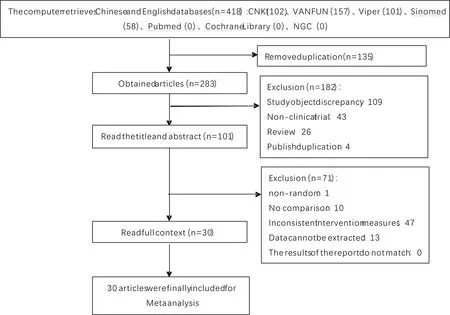
Figure 1 Literature selection process
3.2 The basic characteristics of the included research are shown in table 1.
3.3
Methodological quality evaluation of included studies The vast majority of studies mentioned randomization, 28[7-11,13-18,20-36] in all. Among them, 6 studies[9,20,23,24,28,35] adopted the "random number table method",3 studies[11,29,33] adopted the "computer pre-determined random sequence number",1 study[15] adopted the "lottery method", and 1 study[18] adopted the "according to the time of visit" method. The rest of the studies did not describe the random assignment method in detail. Only one study[32] mentioned the implementation of double blindness; Three studies[11,17,19] reported the exit situation, and two studies[17,19] explained the detailed reasons, but did not carry out intentional analysis on the missing data. All studies[7-36] did not indicate whether distributive concealment or selective reporting of experimental results was used. The quality evaluation of the included studies is shown in figure 2. The score of Jadad scale is shown in table 1.
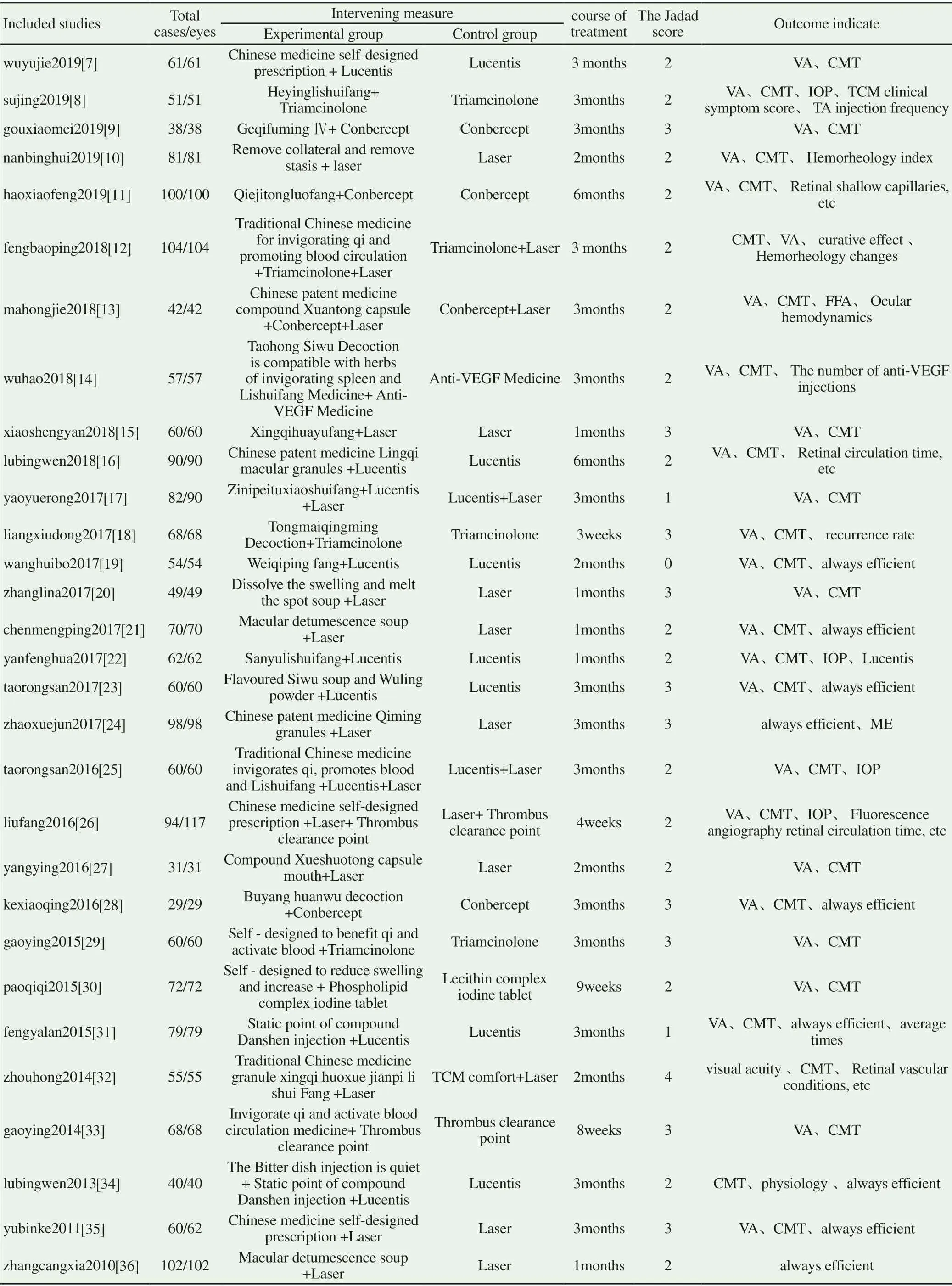
Table 1 The basic characteristics of the included research and Jadad scores
3.4 Meta-analysis results
3.4.1
Meta-analysis on the improvement of the best corrected visual acuity of RVO complicated by ME treated with integrated traditional Chinese and western medicine. A total of 26 RCTs[7,9-15,17,21-22,25,27,29,35] reported post-treatment vision, among which 15 RCT[7,9-15,17,21-22,25,27,29,35] were available for meta-analysis of BCVA, BCVA statistical method was 8[7,9-10,12-13,22,25,27] on the international standard visual acuity chart, 6[8,14,17,21,28,35] on the logarithmic visual acuity chart, and 2[11,15] on the international standard visual acuity chart - letter count, with a total of 988 patients. The results of the meta-analysis of the three methods of visual acuity statistics all indicated that compared with the simple western medicine treatment, the combination of traditional Chinese and western medicine treatment could significantly improve the BCVA value of RVO complicated by ME, as shown in table 2, figure 3, figure 4 and figure 5.

Figure 3 The forest figure of BCVA(the international standard visual acuity chart)

Figure 4 The forest figure of BCVA(the Logarithmic visual acuity chart)

Figure 5 The forest figure of BCVA(the international standard visual acuity chart- alphabet)
3.4.2
Meta-analysis on the improvement of central macular thickness of RVO complicated by ME treated with integrated traditional Chinese and western medicine. 27 RCTs[7-17,19-23,25-35] were included, and heterogeneity existed among all studies (P<0.00001, I =95%). The results of the random effect model analysis showed that compared with the group treated with western medicine alone, the combined treatment with Chinese and western medicine could reduce the CMT value of RVO complicated by ME[MD=-54.6,95% CI(-73.76,-35.43)], and the difference between the groups was statistically significant (P<0.00001), as shown in figure 6.
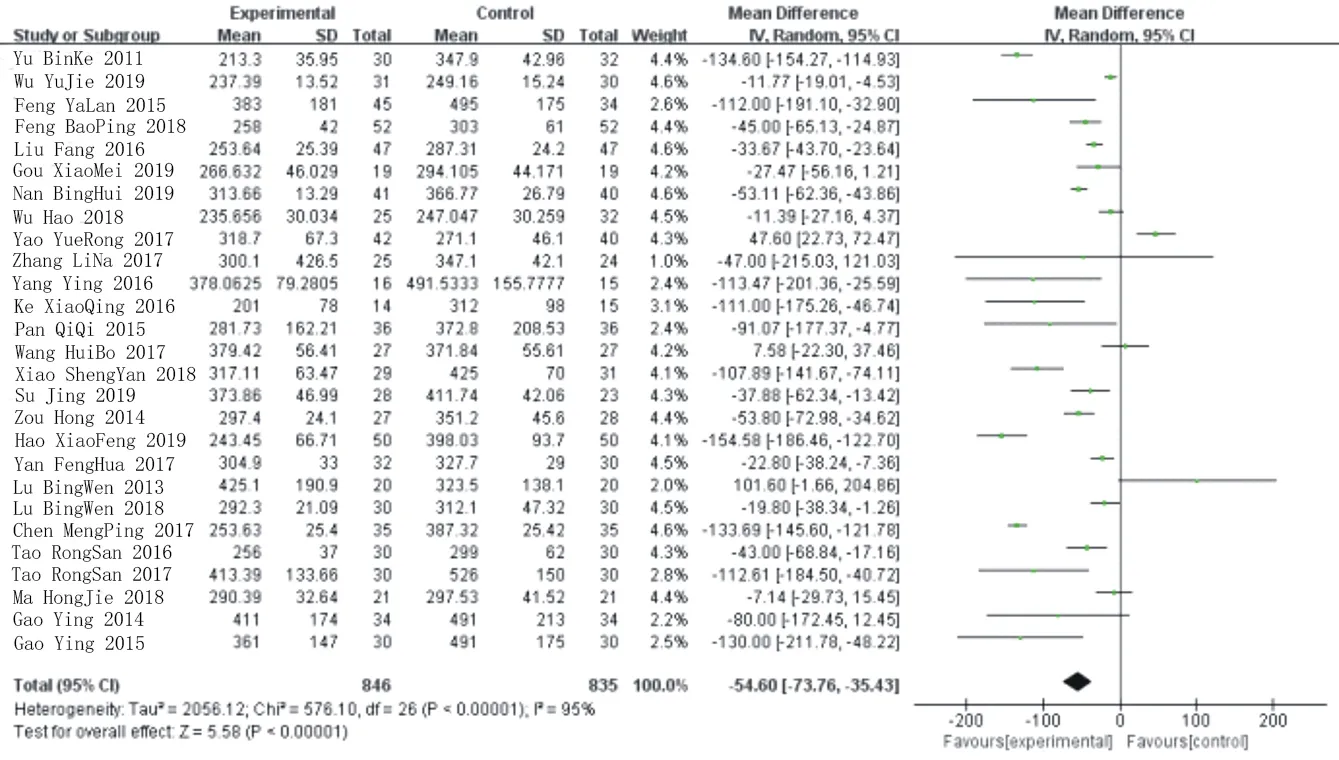
Figure 6 The forest figure of central macular thickness(CMT)
3.4.3
Meta-analysis on the clinical efficacy of integrated traditional Chinese and western medicine in the treatment of RVO complicated by ME. 13 articles[8-12,18,21,24,28,31,34-36] were included, with a total of 922 patients. There was homogeneity among the studies (P=0.56,I =0%). The combined analysis results of the fixed effect model showed that the clinical efficacy of integrated Chinese and western medicine was better than that of western medicine alone [RR=1.32,95% CI(1.22,1.43)], and the results were statistically significant (P<0.00001), as shown in figure 7.
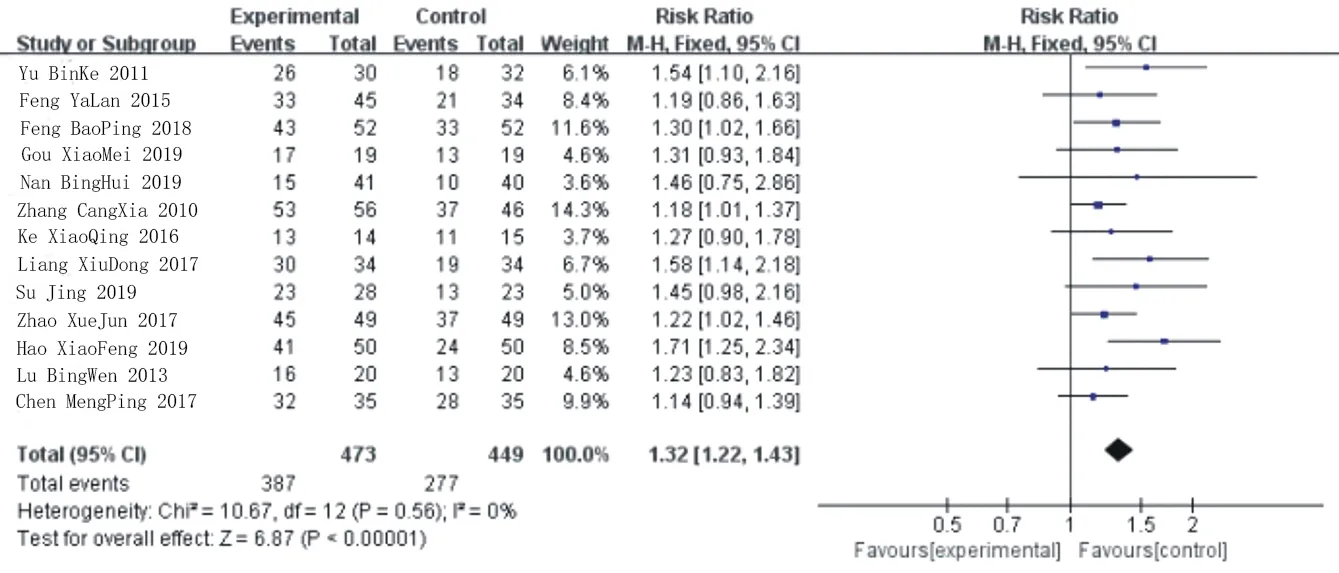
Figure 7 The forest figure of clinical effects

Table 2 Results of Meta-analysis of BCVA in 2 groups
3.5
Adverse reaction In the included studies, adverse reactions were followed up in 12 studies [11-13,17-19,22-23,25,29,33,35].7 RCTs[11-13,17,23,25,33] reported no adverse reaction. Two studies[18,35] reported that 1 case of macular anterior membrane appeared in the experimental group and 2 cases of macular hiatus in the control group. One study[25] reported 2 cases of subconjunctival hemorrhage in the experimental group and 3 cases of subconjunctival hemorrhage in the control group. One study[29] reported 2 cases of increased IOP in the control group and no significant adverse reactions in the test group. Another study[19] reported 1 case of high intraocular pressure in the control group and no adverse reactions in the experimental group.
3.6
Publication bias The "funnel plot" of clinical efficacy showed that all the studies were in the middle and upper part of 95%CI, and the distribution was basically symmetrical, indicating that the risk of publication bias was small, as shown in figure 8.
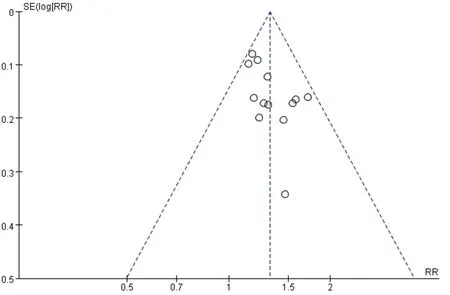
Figure 8 Funnel plot of clinical efficacy
4. Discussion
At present, the etiology, pathogenesis, classification and treatment of RVO complicated by ME are not completely clear. In terms of treatment, intraocular laser photocoagulation is the traditional treatment method for the disease, mainly through reducing the blood supply to the outer layer of the retina, thus improving the ischemia and hypoxia state of the inner layer of the retina, and reducing the production of VEGF to achieve the therapeutic effect[37]. However, laser can cause the damage of lens, iris and cornea[38]; In recent years, VEGF inhibitors have been developing rapidly. VEGF increases vascular permeability by increasing the phosphorylation of tightly bound proteins, which is an important medium that leads to RVO complicated by ME. At present, intravitreal injection of anti-VEGF drugs has become the standard treatment for this disease[38]. However, its intraocular metabolic cycle is short, requiring repeated injection, which brings greater economic pressure to the patients[38]. Steroid drugs reduce ME by inhibiting VEGF gene expression and regulating inflammatory mediators[39]. Clinically, triamcinolone acetonide and dexamethasone implants are commonly used, but there are adverse reactions such as high intraocular pressure and rapid cataract progression.
Chinese medicine believes that c is mainly related to the dysfunction of the liver, spleen and kidney, the stagnation of qiji, the lack of blood flow, and the deficiency of body fluid. In clinical practice, it is mainly used to promote blood circulation and remove blood stasis, invigorate qi and spleen, and reduce permeability and dampness. At present, a number of experiments have proved the clinical efficacy of Chinese medicine combined with modern western medicine in the treatment of RVO complicated by ME. Xi Hanyun et al[40]. used laser combined with traditional Chinese medicine to treat the disease,which could significantly improve vision and hemorheological indicators. Liu Hongzhen et al.[41] found that WuLing Powder combined with Ranibizumab could improve visual field defects and reduce CMT; Su Jing et al.[8] treated this disease with the combination of traditional Chinese medicine and profit water prescription in combination with low dose triamcinolone, and found that it could reduce the number of triamcinolone injections and improve ME.
In this Meta-analysis, it was found that the combined treatment of traditional Chinese and western medicine had a better effect on improving the clinical efficacy of BCVA (international standard visual acuity chart) in patients with RVO secondary ME than that of the western group, and the results were statistically significant. In terms of the efficacy of outcome indicators such as CMT, BCVA (logarithmic visual acuity chart, international standard visual acuity chart- alphabet), there was greater heterogeneity among the studies and lower outcome reliability. However, due to the lack of relevant research data on other indicators such as visual acuity, number of injections into the glass cavity of anti-VEGF drugs and retinal electrophysiology, Meta-analysis could not be conducted. Compared with western medicine treatment alone, there were relatively few reports of adverse reactions in the group of integrated Chinese and western medicine treatment. Therefore, this Meta-analysis shows that the combined treatment of traditional Chinese and western medicine for RVO complicated by ME can improve the BCVA value, reduce the CMT value, improve the clinical efficacy and reduce the adverse reactions, which is worthy of clinical application.
The limitation of this Meta-analysis is that, firstly, there is a lack of observation on the long-term efficacy of these two treatments and the incidence of long-term complications (such as vitreous hemorrhage); Secondly, all the research methodologies and reports included in this system evaluation are not of high quality, and most of the literatures do not apply allocation concealment, blind method, and the sample size is relatively small;Finally, due to the differences in exclusion criteria for patients included in each trial, as well as the different factors such as prescription, treatment course, treatment time and observation indicators, these may bring heterogeneity to the Meta results. It is suggested that such clinical studies should be carried out in the future by using random, distributed hiding and double-blind design as far as possible, expanding the sample size, applying the recognized criteria for diagnosis, treatment and efficacy evaluation, and using the standard and standard of TCM syndrome type and prescription medicine as far as possible, so as to provide more reliable evidence-based medicine evidence for the treatment of RVO complicated by ME treated by integrated traditional Chinese and western medicine.
The author contribution statement
The first author Liu Ziqiang is responsible for the planning and writing articles. Meng Huan and Nong Luqi are responsible for the documents screening and checking moves. Han Mengyu and Zi Yingxin assist extraction of literature information, and it's produced in tabular form the rest of the auxiliary author on articles and related graphic format changes. Corresponding author named Jin Ming is responsible for the topic selection, design and review. Thanks.
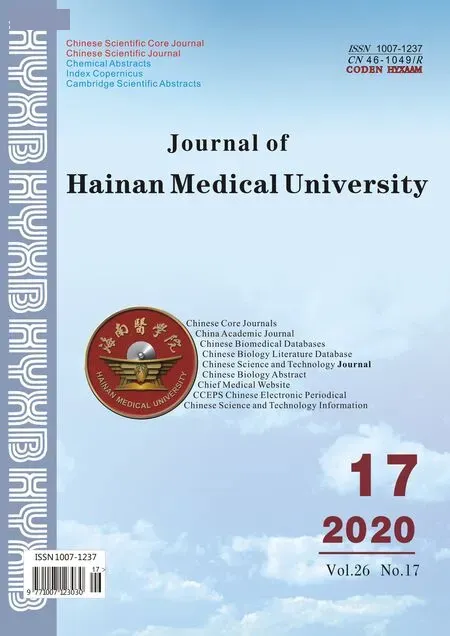 Journal of Hainan Medical College2020年17期
Journal of Hainan Medical College2020年17期
- Journal of Hainan Medical College的其它文章
- Study of the AQP4 expression in traumatic brain edema and multimodal MRI imaging
- Analysis of two cases of patent ductus arteriosus ligation in preterm identical twins and literature review
- Role of 18F-FDG SPECT / CT imaging in the diagnosis and initial staging of lymphoma
- The value of real-time three-dimensional echocardiography in evaluating left ventricular function for different degrees of heart failure
- Association between polymorphism of MC4R rs489693 gene and disorder of glucose and lipid metabolism in schizophrenia patients treated with olanzapine
- Target prediction and mechanism of Shiyangning in treatment of perianal eczema
